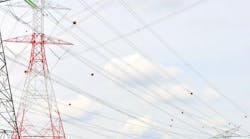Today’s utilities continue to face increasing challenges as the grid transforms to a more digitally controlled environment. The grid of the past developed over many years with several key tenets: safety, low cost, and reliability. These tenets, over many decades, led to the adoption of electricity across most sectors of modern industrialized society. Electricity use allowed us to gain efficiency and reduce human toil due to its form and function. Over time, reliability continued to improve and cost continued to fall. Every sector now leans on electricity to function and demands ever-increasing reliability.
As the utility industry morphs into one that relies heavily on decentralized low-carbon fuel sources in thousands of locations, (vs. a tenth of the locations with centralized generation), it must rely on significant communication systems, cyber systems and software-controlled systems. The utility will not have control or situational awareness of many of these systems. This change to low carbon fuel sources comes at a time when the industry must deal with increasing weather threats — fires, tornadoes, hurricanes, solar storms — and other threats such as electromagnetic pulse attack potential, cyberattacks, global supply chains or pandemic events.
As our decentralized generation plants are shut down, utilities will need to develop new blackstart plans that can work with the remaining decentralized plants, (usually located on extra high-voltage networks), and work with the dispersed inverter-based generation. Utilities will also need additional blackstart resiliency plans that can cope with restarting systems due to some of these new hazards like cyberattacks and electromagnetic events. For these types of events, the workforce needed for restart is different, the training approach is different, and consideration must be given to starting a core “minimum grid” in a time period that prevents mass migration of the populace that one serves or degradation of societal functions.
These rapid changes have led many utilities to realize that the key tenets of our business are changing. The new tenets will become: safety, cost-effectiveness (vs. low cost), increased reliability, resiliency and environmental responsibility (clean low carbon energy sources).
Given the significant changes we are facing and the global interconnected society, reliability in the coming years will be affected due to the challenges facing utilities and their customers as we take very complex and geographically dispersed software-controlled systems and make them work together in harmony. Some of the new systems will not support some of the hazards that a utility must manage — such as microgrids. Microgrid systems are complex and are not designed today for electromagnetic events nor will they help in some cases with clean energy issues if they contain many point sources of fossil generation in the microgrid they create.
The recent pandemic crisis shows how the interconnected nature of modern society is affected by global events, and how the critical nature of certain products for each industry must be considered. This global supply impact for all of the hazards that a utility must face in the new grid will need to be thoughtfully considered.
The local pandemic has also shown the resiliency of our society when one plans appropriately given the technology we have at our disposal today. Utilities quickly discontinued travel, encouraged proper hygiene of everyone entering their facilities, self-quarantined employees that returned from virus hot spots, and required testing before they returned to work. As the outbreak continued and a pandemic was realized, utilities began to work key functions from home, removing all but critical personnel from operating centers, setting up accommodations at operating centers so workers could eat, sleep and live at work once they had their loved ones in a safe environment, and stood up contingency plans to ensure that the lights would stay on or personnel could respond in a reasonable manner to restore service.
It is too early to tell how all of these actions will play out at this time but the planning for resiliency is not something that occurs randomly. It requires thought on which jobs are critical, what functions can be reduced or performed remotely, and an understanding that reducing the number of individuals and their outside exposure is important to maintain operations.
I applaud my current and former colleagues for all they continue to do to ensure our customers have uninterrupted service. The challenges of the future, just like the pandemic they are now facing, will be met with planning, engineering and the support of regulators, shareholders and customers.
Resiliency is no longer something we desire; it is essential. Electricity now plays a key role in the operation of advanced industrialized nations. Water, communications, national defense, health systems and financial networks all depend on an extremely reliable electric infrastructure.
Unfortunately, the benefits of low-carbon generation resources increase the complexity and cost of the network feeding our homes and businesses. Over the next decade this complexity, coupled with resiliency measures that utilities will need to implement, will result in an increase in the cost of service. We will no longer expect lower cost; cost-effectiveness will become the norm if we are to have all of the benefits of a low carbon society. Over time, as engineers deal with this new complex network, I would suspect cost will again fall and reliability will improve beyond the norm we have today, while giving more control and options for customers and operators in managing their systems.


